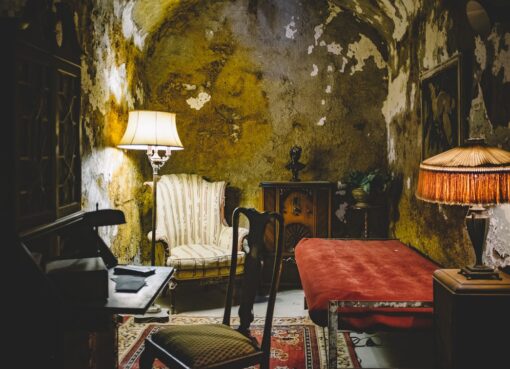The Allure of Pink Depression Glass

Pink Depression Glass has a rich and fascinating history that dates back to the early 20th century. The term “Depression Glass” refers to a type of glassware that was mass-produced in the United States during the Great Depression, which lasted from 1929 to the late 1930s. This glassware was often given away as a promotional item or sold at a very low cost, making it accessible to the average American household during a time of economic hardship. Pink Depression Glass, in particular, gained popularity due to its delicate and feminine color, which was a stark contrast to the bleakness of the era.
The production of Pink Depression Glass peaked during the 1930s and continued into the 1940s, with many different patterns and designs being created by various glass companies. Some of the most well-known manufacturers of Pink Depression Glass include Anchor Hocking, Federal Glass, Hocking Glass Company, and Macbeth-Evans. These companies produced a wide range of items in pink glass, including plates, cups, bowls, vases, and serving pieces. The popularity of Pink Depression Glass waned after World War II as consumer tastes shifted towards more modern and minimalist designs. However, in recent years, there has been a resurgence of interest in this vintage glassware, with collectors and enthusiasts seeking out rare and unique pieces to add to their collections.
Key Takeaways
- Pink Depression Glass originated in the 1920s and 1930s as an affordable and decorative glassware option during the Great Depression.
- Collecting Pink Depression Glass has become a popular hobby due to its historical significance and beautiful designs.
- Identifying Pink Depression Glass patterns and makers can be challenging, but resources and guides are available to help collectors.
- The value of Pink Depression Glass in today’s market can vary based on rarity, condition, and demand from collectors.
- Using Pink Depression Glass in home decor adds a touch of vintage charm and elegance to any space.
Collecting Pink Depression Glass: A Popular Hobby
Collecting Pink Depression Glass has become a popular hobby for many people who appreciate the beauty and history of this vintage glassware. The appeal of collecting Pink Depression Glass lies in its delicate pink hue, intricate patterns, and nostalgic charm. Many collectors are drawn to the romantic and feminine aesthetic of Pink Depression Glass, as well as the historical significance of the Great Depression era. Some collectors focus on acquiring specific patterns or pieces from a particular manufacturer, while others enjoy the thrill of hunting for rare and unique items at antique shops, flea markets, and online auctions.
For some collectors, the hunt for Pink Depression Glass is as exciting as the collection itself. They enjoy the thrill of discovering hidden gems and uncovering the stories behind each piece they acquire. Collectors often take pride in displaying their collections in their homes, using them for special occasions or simply admiring them as works of art. The community of Pink Depression Glass collectors is a tight-knit one, with enthusiasts sharing their knowledge and passion for vintage glassware through online forums, social media groups, and collector’s clubs. Whether it’s a hobby or a serious pursuit, collecting Pink Depression Glass allows enthusiasts to connect with the past and preserve a piece of American history.
Identifying Pink Depression Glass Patterns and Makers
Identifying Pink Depression Glass patterns and makers can be a challenging but rewarding endeavor for collectors and enthusiasts. With hundreds of different patterns and designs created by various glass companies during the Great Depression era, it can be difficult to distinguish one from another. Some of the most popular patterns of Pink Depression Glass include “Cherry Blossom” by Jeannette Glass Company, “Princess” by Hocking Glass Company, “Mayfair” by Anchor Hocking, and “Old Colony” by Hocking Glass Company. Each pattern has its own unique characteristics, such as floral motifs, geometric shapes, or intricate etchings.
In addition to patterns, identifying the makers of Pink Depression Glass is also important for collectors who want to authenticate and appraise their pieces. Many glass companies marked their products with a logo or stamp, while others relied on distinctive design elements to distinguish their work. Some well-known makers of Pink Depression Glass include Anchor Hocking, Federal Glass, Hocking Glass Company, Macbeth-Evans, and Jeannette Glass Company. Collectors often rely on reference books, online resources, and expert appraisers to help them identify and authenticate their Pink Depression Glass pieces. By learning about the different patterns and makers, collectors can gain a deeper appreciation for the history and craftsmanship behind each piece in their collection.
The Value of Pink Depression Glass in Today’s Market
| Item | Price Range | Factors Affecting Value |
|---|---|---|
| Plate | 20 – 50 | Rarity, condition, and pattern |
| Cup and Saucer Set | 30 – 80 | Maker, age, and design |
| Pitcher | 50 – 150 | Size, color, and presence of damage |
| Vase | 40 – 100 | Shape, style, and historical significance |
The value of Pink Depression Glass in today’s market can vary widely depending on factors such as rarity, condition, pattern, maker, and demand. While some pieces of Pink Depression Glass can be found at affordable prices, rare and sought-after items can command high prices among collectors and enthusiasts. The value of Pink Depression Glass is also influenced by trends in the vintage and antique market, as well as the overall interest in collecting this type of glassware.
Certain patterns and pieces of Pink Depression Glass are considered more valuable than others due to their scarcity or historical significance. For example, rare serving pieces or complete sets in pristine condition can fetch higher prices at auctions and antique shows. Additionally, pieces with unique design elements or unusual shapes may also be highly sought after by collectors. As with any collectible item, the value of Pink Depression Glass is ultimately determined by supply and demand, as well as the condition and provenance of each individual piece.
Using Pink Depression Glass in Home Decor
Using Pink Depression Glass in home decor has become a popular trend among interior design enthusiasts who appreciate the vintage charm and timeless elegance of this glassware. Whether it’s a single statement piece or an entire collection displayed on open shelves or in glass cabinets, Pink Depression Glass adds a touch of nostalgia and sophistication to any home decor style. The delicate pink hue of this glassware complements a wide range of color palettes, from soft pastels to bold jewel tones, making it a versatile choice for decorating.
One popular way to incorporate Pink Depression Glass into home decor is by using it as tableware for special occasions or everyday dining. Vintage pink glass plates, cups, and serving pieces can add a touch of old-world glamour to a tablescape, whether it’s for a formal dinner party or a casual brunch with friends. Another creative way to use Pink Depression Glass in home decor is by repurposing it as vases for fresh flowers or as decorative accents on mantels, side tables, or bookshelves. The timeless beauty of Pink Depression Glass makes it a beloved choice for those who appreciate the artistry and craftsmanship of vintage glassware.
Caring for and Displaying Pink Depression Glass

Caring for and displaying Pink Depression Glass requires special attention to ensure that these delicate vintage pieces remain in pristine condition for years to come. Proper care and maintenance are essential for preserving the beauty and value of Pink Depression Glass collections. When handling Pink Depression Glass, it’s important to use gentle cleaning methods and avoid harsh chemicals or abrasive materials that can damage the glass surface. Hand washing with mild soap and warm water is recommended for removing dust and dirt from these vintage pieces.
When it comes to displaying Pink Depression Glass, collectors often opt for glass cabinets or open shelves that allow natural light to showcase the delicate pink hue and intricate patterns of the glassware. Avoiding direct sunlight and extreme temperatures is crucial for preventing fading or discoloration of the glass. Some collectors also use display stands or plate hangers to showcase individual pieces as decorative accents on walls or tabletops. By taking proper care of their collections and thoughtfully displaying them in their homes, collectors can continue to enjoy the beauty and history of Pink Depression Glass for generations to come.
The Enduring Appeal of Pink Depression Glass
The enduring appeal of Pink Depression Glass lies in its timeless beauty, historical significance, and nostalgic charm that continues to captivate collectors and enthusiasts around the world. Despite being produced during a time of economic hardship, Pink Depression Glass represents an era of resilience and creativity that resonates with many people today. The delicate pink hue and intricate patterns evoke a sense of romance and femininity that transcends generations, making it a beloved choice for those who appreciate vintage glassware.
The resurgence of interest in Pink Depression Glass in recent years reflects a growing appreciation for craftsmanship and design from bygone eras. Collectors are drawn to the stories behind each piece of Pink Depression Glass, whether it’s a rare find at an antique shop or a cherished heirloom passed down through generations. The enduring appeal of Pink Depression Glass also extends to its versatility in home decor, as well as its value as a collectible item with historical significance. As long as there are enthusiasts who appreciate the beauty and history of vintage glassware, the enduring appeal of Pink Depression Glass will continue to thrive for years to come.
If you’re a fan of pink depression glass, you’ll love the collection of vintage glassware available at Copy Collection. Their selection includes a variety of beautiful pink depression glass pieces, perfect for adding a touch of vintage charm to your home. Whether you’re looking for a unique serving dish or a set of elegant dessert plates, you’re sure to find something you love at Copy Collection. Check out their website to browse their full range of vintage glassware and start building your own collection today.
FAQs
What is pink depression glass?
Pink depression glass is a type of glassware that was produced during the Great Depression era, typically from the late 1920s to the early 1940s. It is characterized by its pink color and intricate designs, and was often given away as premiums in products such as oatmeal or flour.
How can you identify pink depression glass?
Pink depression glass can be identified by its distinct pink color and the intricate patterns and designs that are often pressed into the glass. Some popular patterns include “Cherry Blossom,” “Princess,” and “Adam.”
What were the popular uses for pink depression glass?
Pink depression glass was often used for serving and entertaining purposes. It was commonly used for serving food, such as desserts, salads, and hors d’oeuvres, as well as for serving beverages.
Is pink depression glass valuable?
Some pieces of pink depression glass can be valuable, especially those with rare patterns or in mint condition. However, the value of pink depression glass can vary greatly depending on factors such as rarity, condition, and demand.
How can I start collecting pink depression glass?
If you are interested in collecting pink depression glass, you can start by researching different patterns and styles to determine what you are interested in. You can also attend antique shows, visit antique shops, and search online marketplaces to find pieces to add to your collection.
Leave a Reply
You must be logged in to post a comment.



Leave a Comment